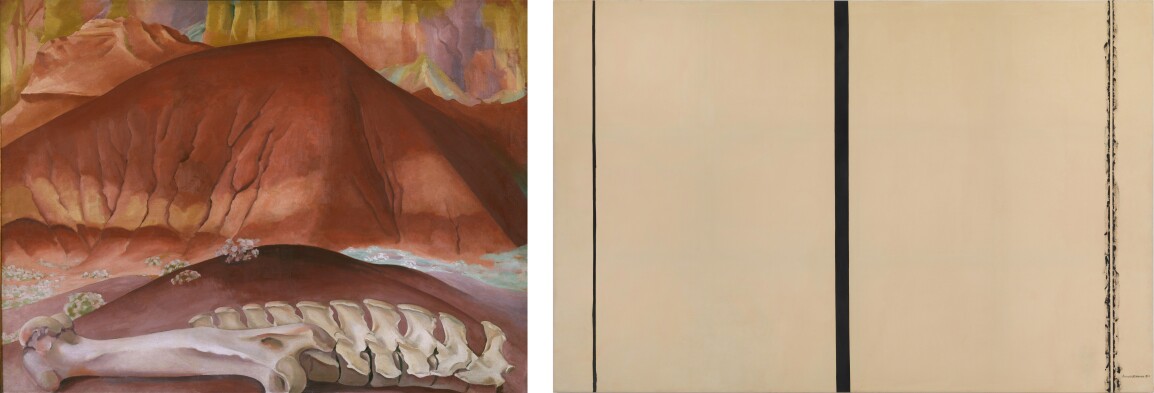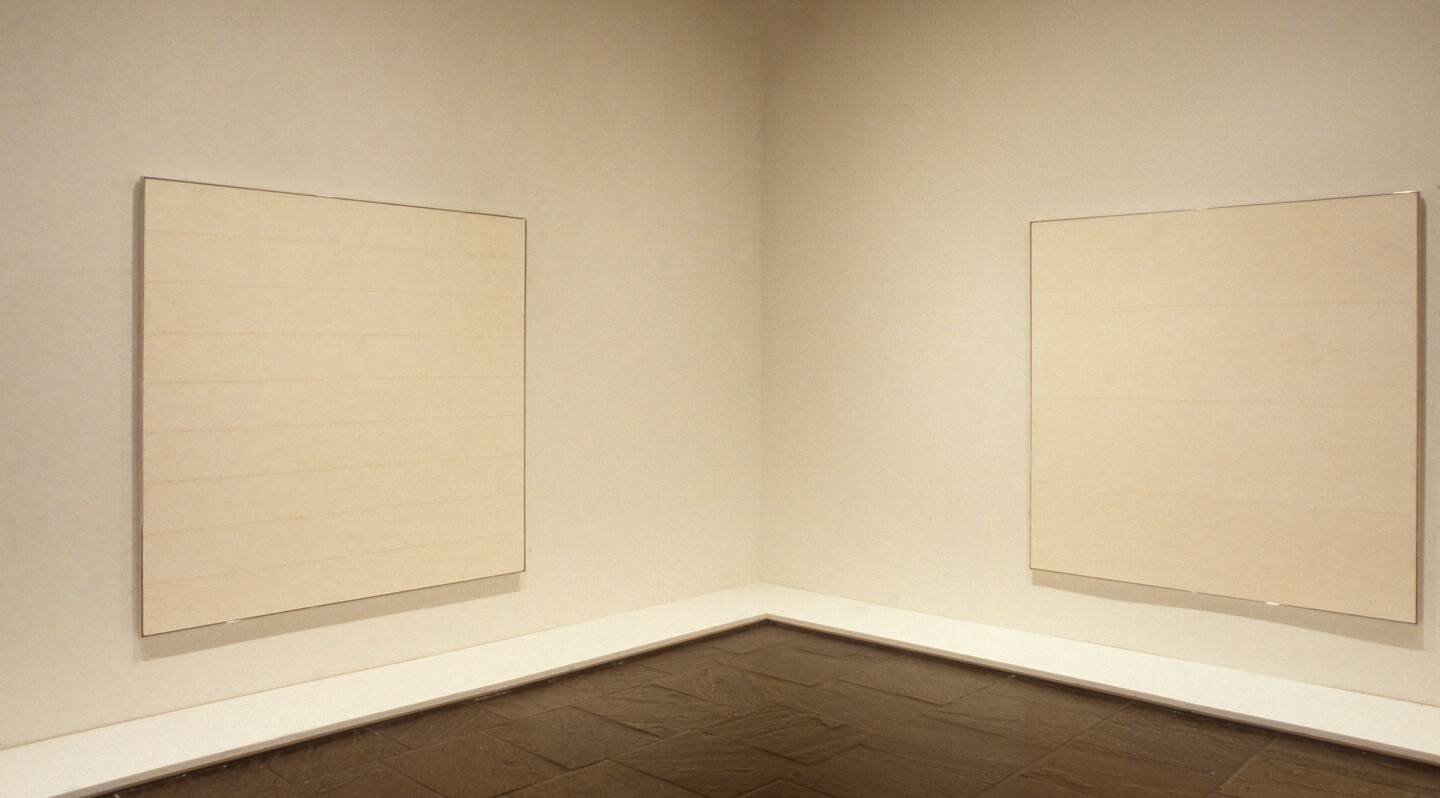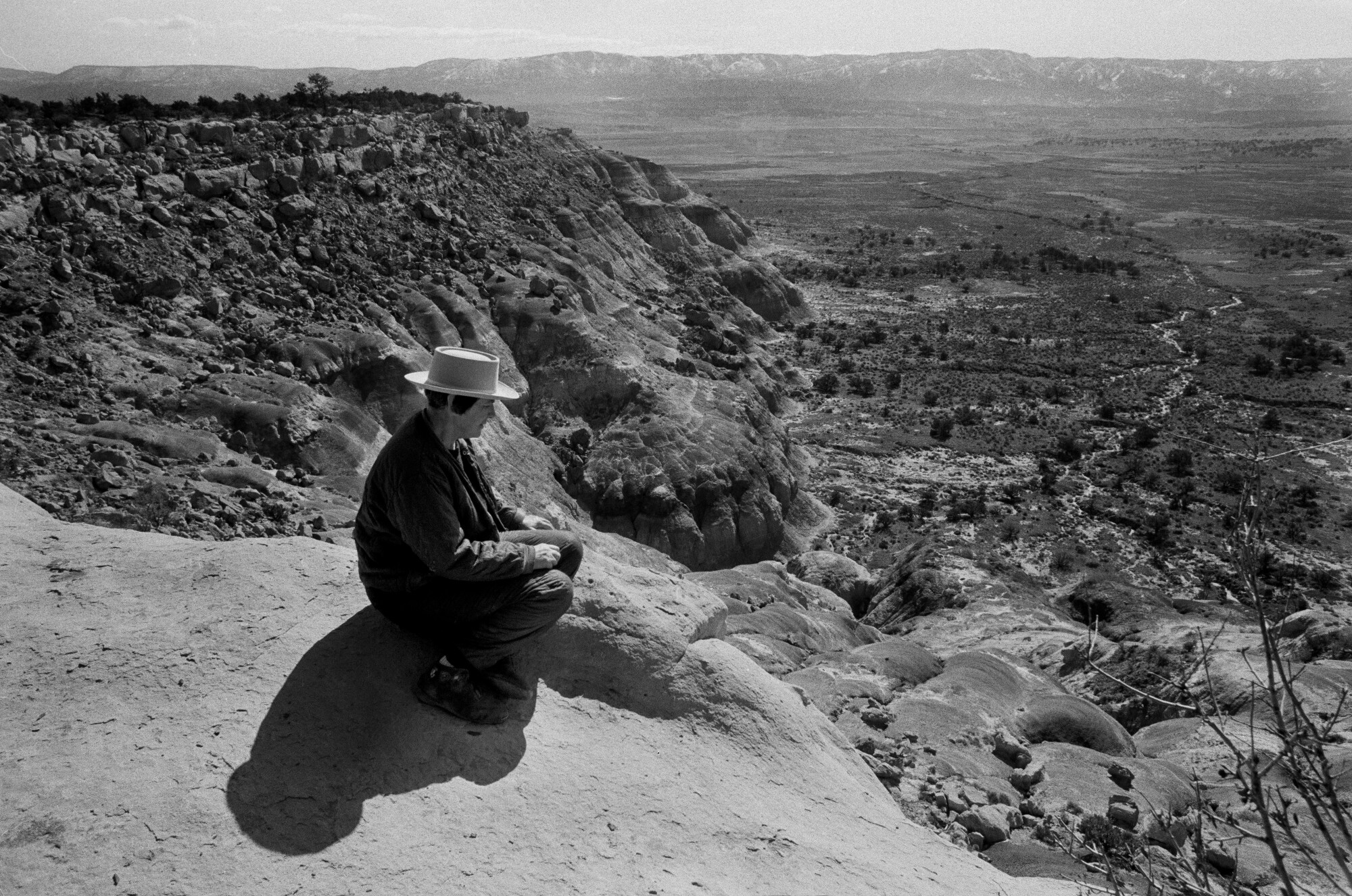“Once you are caught in one of her paintings, it is an almost painful effort to pull back from the private experience she triggers to examine the way the picture is made. The desire to simply let yourself flow through it, or let it flow through you, is much stronger. Even at its evocative best, her work holds for its own beauty, for the extraordinary skill and delicacy of her line and surface."

In its ineffable luminosity and grace, Agnes Martin’s Untitled I is a breathtakingly assured expression of the artist’s mesmerising, striated facture. Martin’s art reflects a prolonged and deeply considered investigation into the nature of abstraction and the role of the artist, masterfully articulating an intellectual balancing act between the subtle poetry of delicate mark-making and the muscular prose of modernist geometry. Here, Martin reduces her characteristic grid to its most ascetic extreme: three symmetrical, gossamer-thin lines traverse the purified ground of the canvas, as the tenets of composition and perspective are stripped down to their barest essentials; the stunning result being the achievement of unclouded aesthetic serenity. Executed in 1982 on the artist’s signature 72-inch square canvas, Untitled I is the consummate culmination of Martin’s prodigious output: a theoretical masterclass in the artist’s inimitable style. Serenely balanced, the composition demonstrates her predisposition for geometrical order; and yet, it is the subtle irregularities within the details of this apparent uniformity that reveal the humanity of Martin’s own touch. When viewed from a distance, the faint horizontal lines appear straight and ordinary, virtually disappearing into the hushed tonality of the expanse. Upon closer inspection, however, these threads are characterised by slight irregularities where Martin picked up her pencil, paused, and then resumed, or where the textured surface of the paint discreetly diverts the path of her hand. Demonstrating Martin’s mark-making genius, the three rosy-hued lines seem almost overwhelmed by the vastness of the surrounding blank space, yet also appear to float above the textured surface, vibrating with their own quiet energy.

Right: Barnett Newman, Shining Forth (to George), 1961. Centre Georges Pompidou. Art © The Barnett Newman Foundation, New York / DACS, London 2025
The soft desert hues of Untitled I are inevitably reminiscent of a vast horizon, as the flaxen bands create an illusion of sand and sky reflecting and refracting one another like the infinite expanse of the terrain that characterises Martin’s beloved Taos. Her distinctive delicate tones were created through her own method of layering thick gesso with a diluted acrylic shade. The gesso ground crucially imbues the paint with a unique luminosity and spatial depth. By applying a thin acrylic to a chalky white primer, light is simultaneously absorbed and reflected; the painted surface appears at once opaque and translucent. Applied by hand using masking tape, small inconsistencies and hesitations of hand in the paint give the present work a unique vitality and strength. As such the limitless vistas of both sky and sand that surrounded Martin in New Mexico are transposed to canvas, with surface imperfections appearing like mirages emerging or disappearing in the desert sun.

Untitled I thus exemplifies the triumphal apex of Martin’s career. Emphasising Martin’s brilliant subtlety as represented by the present work, Anna C. Chave notes: “Rather than overlooked by critics, Martin’s quiet technique caused them to look all the more thoroughly, just as we may be impelled to lean forward and concentrate more intensely when a speaker’s voice is exceptionally soft” (Exh. Cat., New York, Whitney Museum of American Art, Agnes Martin, 1992, p. 138). Untitled I thus evinces the artist’s formidable intelligence, keen focus, and masterful skill at evoking a profound contemplative quietude. Even as it paradoxically suggests a reduction to the barest artistic bones of graphite overlaid on pigment, the resulting masterpiece is breathtaking in its sophisticated brilliance.
